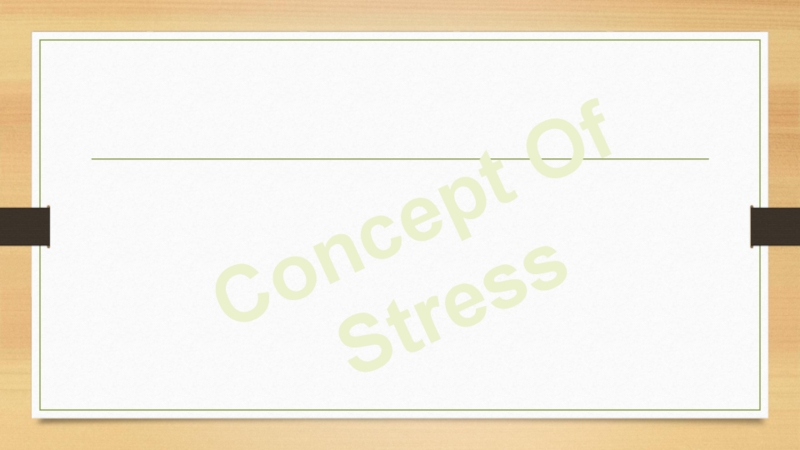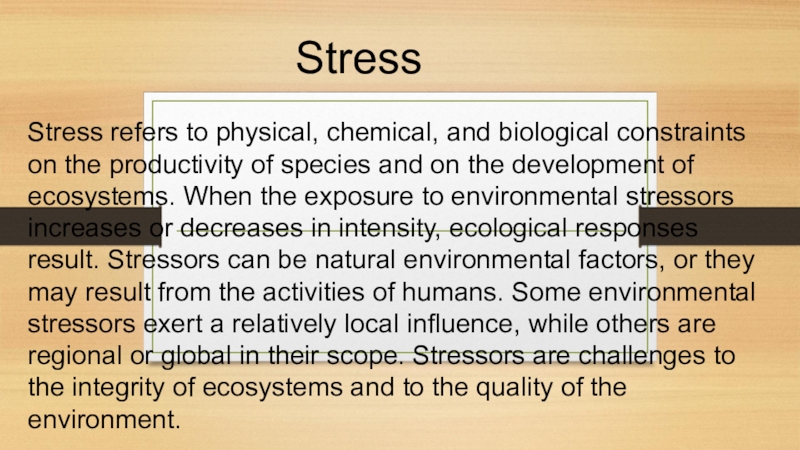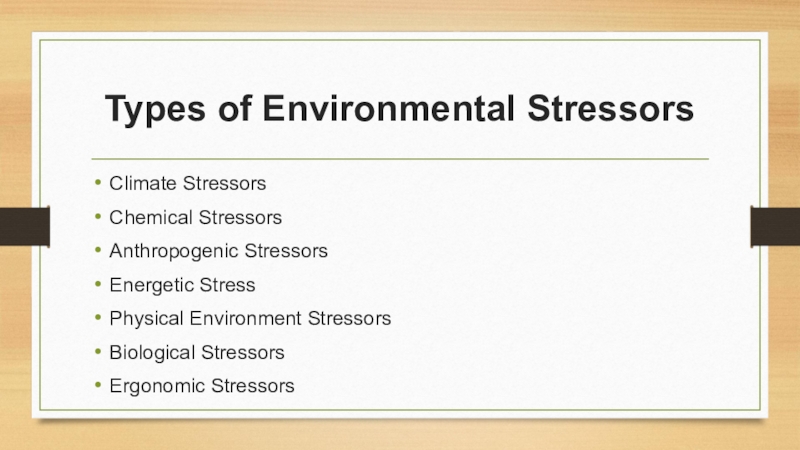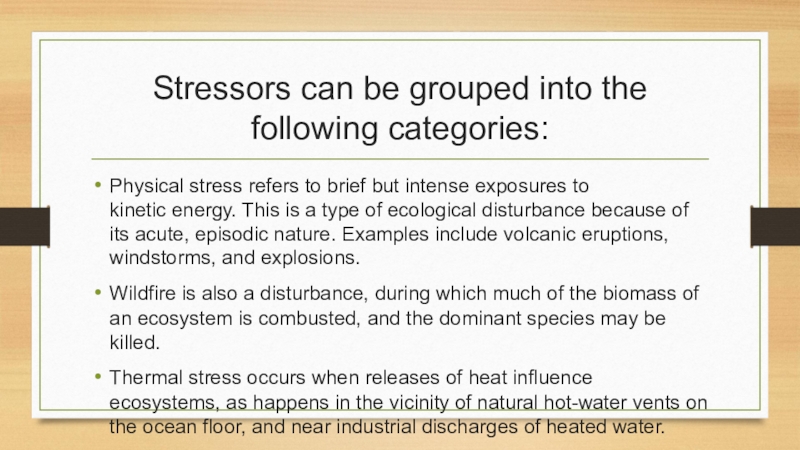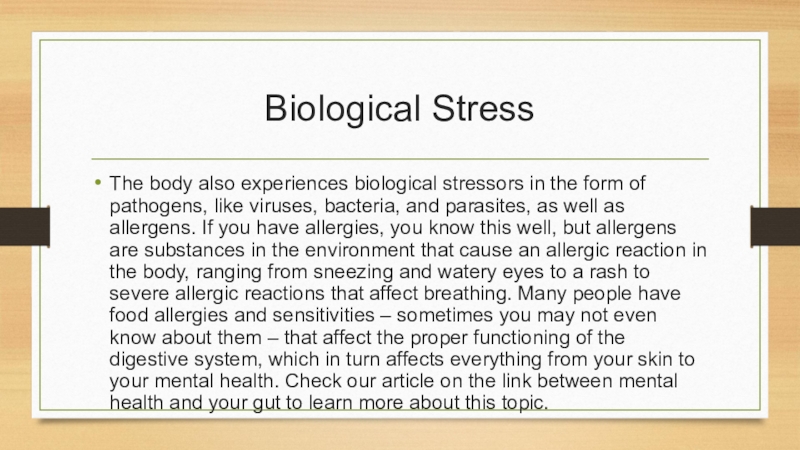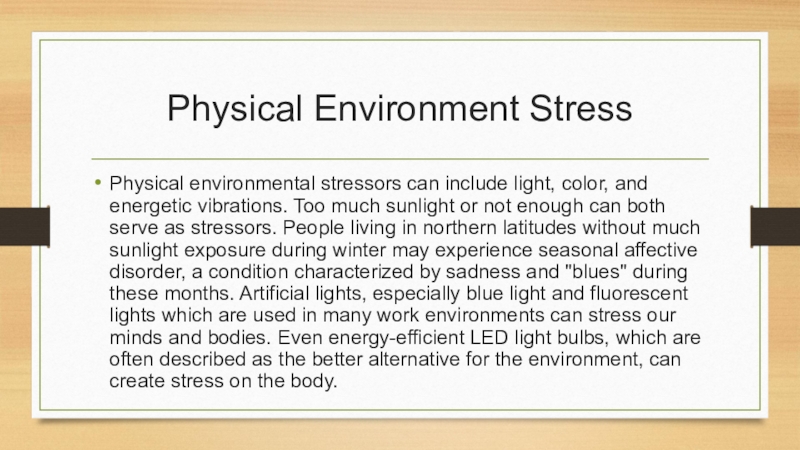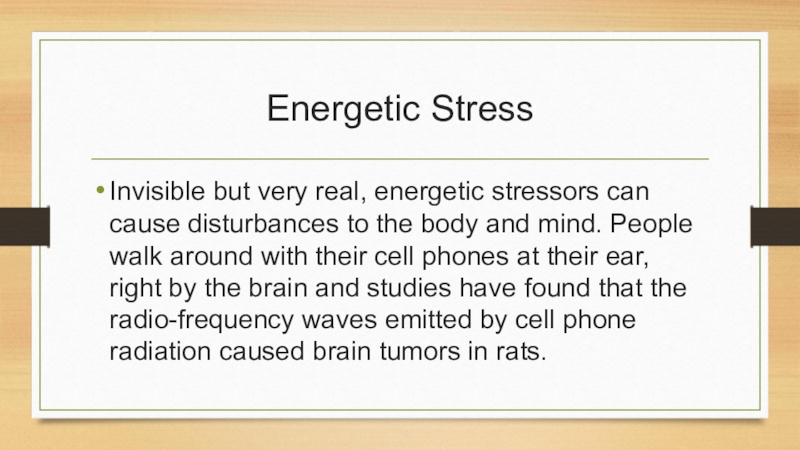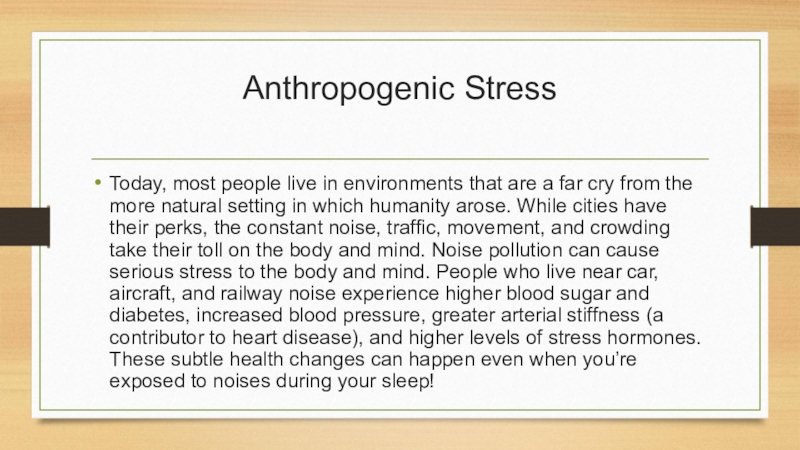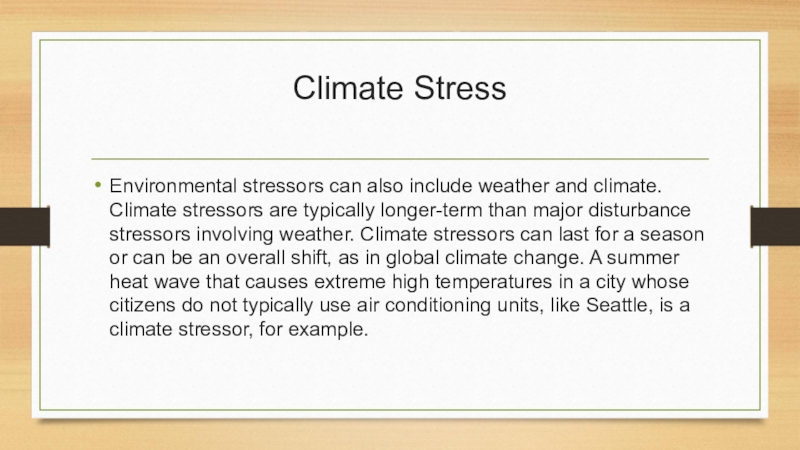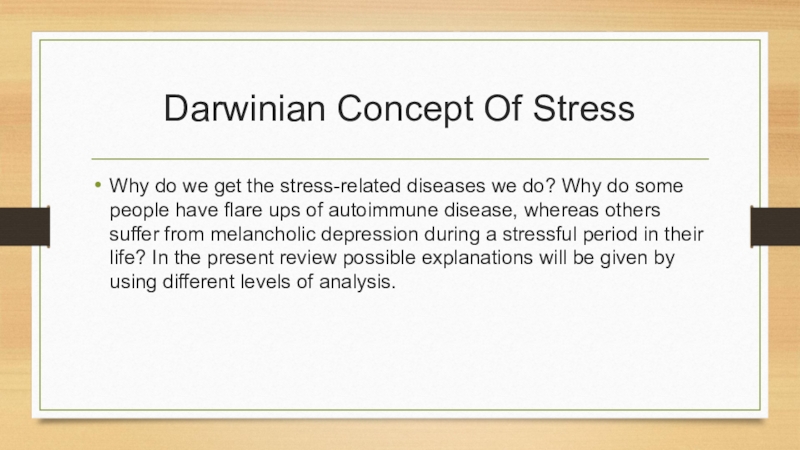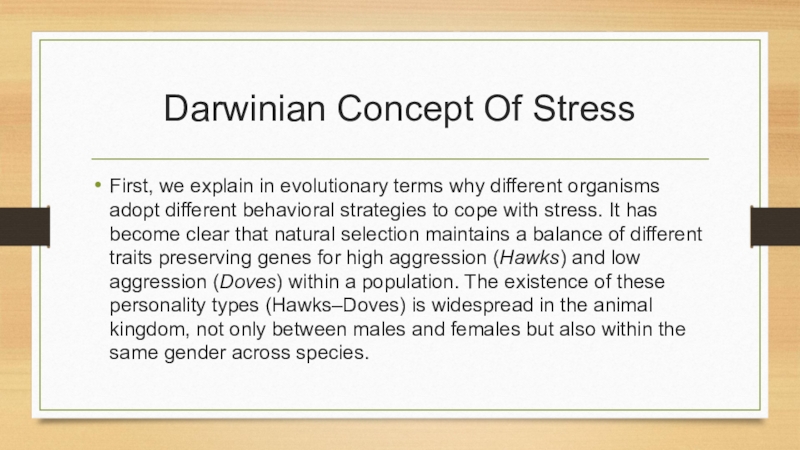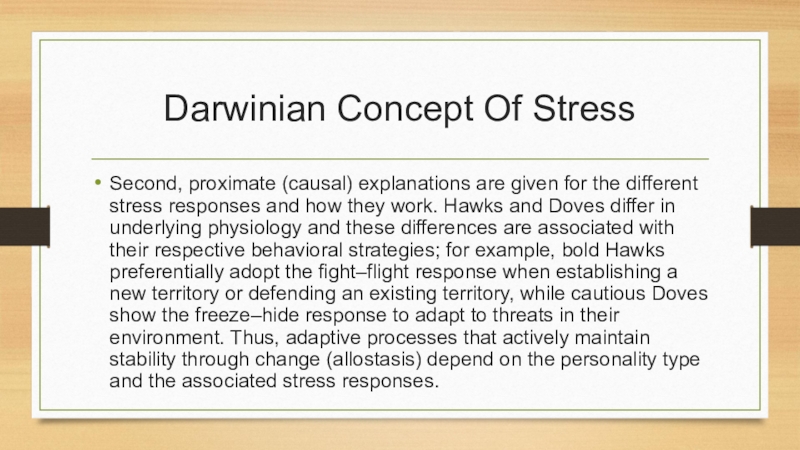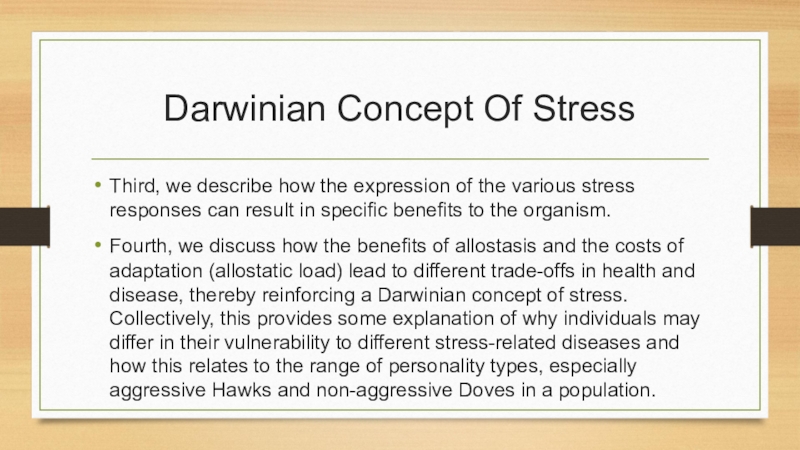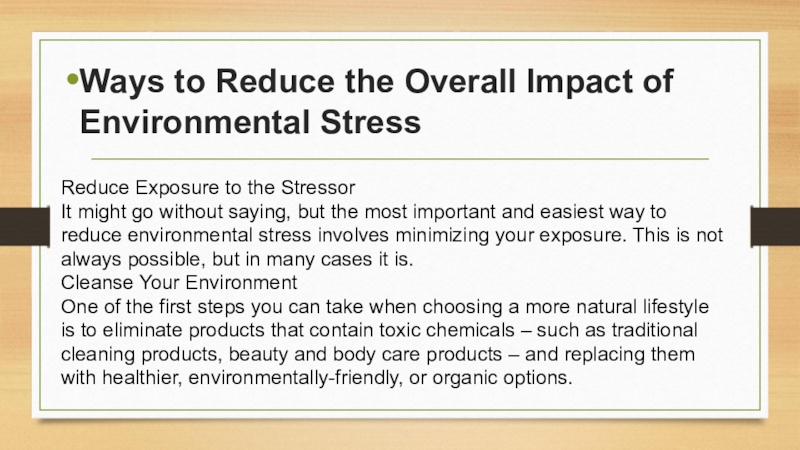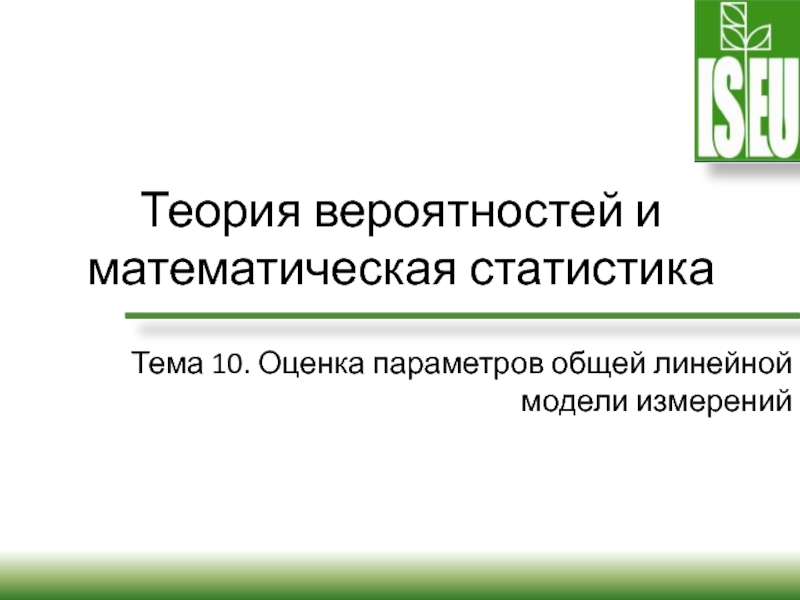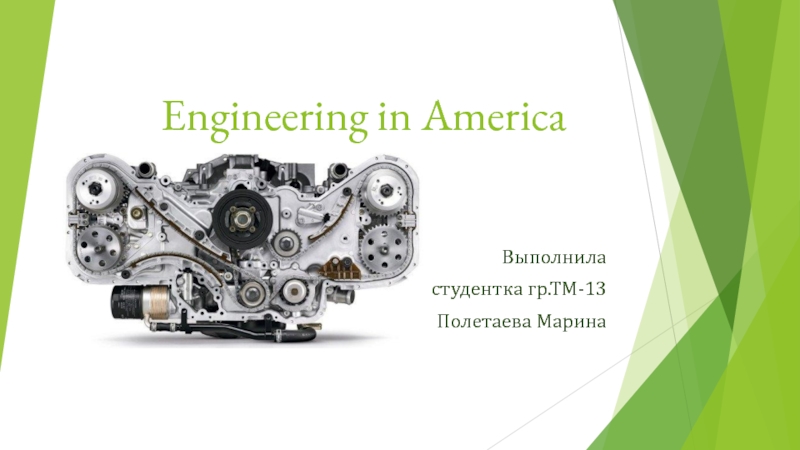Разделы презентаций
- Разное
- Английский язык
- Астрономия
- Алгебра
- Биология
- География
- Геометрия
- Детские презентации
- Информатика
- История
- Литература
- Математика
- Медицина
- Менеджмент
- Музыка
- МХК
- Немецкий язык
- ОБЖ
- Обществознание
- Окружающий мир
- Педагогика
- Русский язык
- Технология
- Физика
- Философия
- Химия
- Шаблоны, картинки для презентаций
- Экология
- Экономика
- Юриспруденция
Teacher – Anna Zhukova Made By – Mohammad Imran Sheikh Batch – 194 A Biology
Содержание
- 1. Teacher – Anna Zhukova Made By – Mohammad Imran Sheikh Batch – 194 A Biology
- 2. Concept Of Stress
- 3. Stress refers to physical, chemical, and biological constraints
- 4. Types of Environmental StressorsClimate StressorsChemical StressorsAnthropogenic StressorsEnergetic StressPhysical Environment StressorsBiological StressorsErgonomic Stressors
- 5. Stressors can be grouped into the following
- 6. Biological StressThe body also experiences biological stressors
- 7. Physical Environment StressPhysical environmental stressors can include
- 8. Energetic StressInvisible but very real, energetic stressors
- 9. Anthropogenic Stress Today, most people live in
- 10. Chemical Stress We encounter thousands of chemicals
- 11. Climate Stress Environmental stressors can also include
- 12. Darwinian Concept Of StressWhy do we get
- 13. Darwinian Concept Of StressFirst, we explain in
- 14. Darwinian Concept Of StressSecond, proximate (causal) explanations
- 15. Darwinian Concept Of StressThird, we describe how
- 16. Ways to Reduce the Overall Impact of
- 17. Thank You
- 18. Скачать презентанцию
Concept Of Stress
Слайды и текст этой презентации
Слайд 3Stress refers to physical, chemical, and biological constraints on the productivity
of species and on the development of ecosystems. When the exposure to
environmental stressors increases or decreases in intensity, ecological responses result. Stressors can be natural environmental factors, or they may result from the activities of humans. Some environmental stressors exert a relatively local influence, while others are regional or global in their scope. Stressors are challenges to the integrity of ecosystems and to the quality of the environment.Stress
Слайд 4Types of Environmental Stressors
Climate Stressors
Chemical Stressors
Anthropogenic Stressors
Energetic Stress
Physical Environment Stressors
Biological
Stressors
Ergonomic Stressors
Слайд 5Stressors can be grouped into the following categories:
Physical stress refers
to brief but intense exposures to kinetic energy. This is a
type of ecological disturbance because of its acute, episodic nature. Examples include volcanic eruptions, windstorms, and explosions.Wildfire is also a disturbance, during which much of the biomass of an ecosystem is combusted, and the dominant species may be killed.
Thermal stress occurs when releases of heat influence ecosystems, as happens in the vicinity of natural hot-water vents on the ocean floor, and near industrial discharges of heated water.
Слайд 6Biological Stress
The body also experiences biological stressors in the form
of pathogens, like viruses, bacteria, and parasites, as well as
allergens. If you have allergies, you know this well, but allergens are substances in the environment that cause an allergic reaction in the body, ranging from sneezing and watery eyes to a rash to severe allergic reactions that affect breathing. Many people have food allergies and sensitivities – sometimes you may not even know about them – that affect the proper functioning of the digestive system, which in turn affects everything from your skin to your mental health. Check our article on the link between mental health and your gut to learn more about this topic.Слайд 7Physical Environment Stress
Physical environmental stressors can include light, color, and
energetic vibrations. Too much sunlight or not enough can both
serve as stressors. People living in northern latitudes without much sunlight exposure during winter may experience seasonal affective disorder, a condition characterized by sadness and "blues" during these months. Artificial lights, especially blue light and fluorescent lights which are used in many work environments can stress our minds and bodies. Even energy-efficient LED light bulbs, which are often described as the better alternative for the environment, can create stress on the body.Слайд 8Energetic Stress
Invisible but very real, energetic stressors can cause disturbances
to the body and mind. People walk around with their
cell phones at their ear, right by the brain and studies have found that the radio-frequency waves emitted by cell phone radiation caused brain tumors in rats.Слайд 9Anthropogenic Stress
Today, most people live in environments that are a
far cry from the more natural setting in which humanity
arose. While cities have their perks, the constant noise, traffic, movement, and crowding take their toll on the body and mind. Noise pollution can cause serious stress to the body and mind. People who live near car, aircraft, and railway noise experience higher blood sugar and diabetes, increased blood pressure, greater arterial stiffness (a contributor to heart disease), and higher levels of stress hormones. These subtle health changes can happen even when you’re exposed to noises during your sleep!Слайд 10Chemical Stress
We encounter thousands of chemicals daily: pesticide residue on
our food, antibiotics, and hormones fed to food animals, and chemicals
in our beauty and household products and even in our carpets and furniture. While they may not cause blatant mental stress – unless you live next door to a chemical factory – these substances physically stress the body. Although the body has natural detoxification processes in the liver and kidneys, these organs can scarcely keep up with so the thousands of chemicals we are exposed to, which means they accumulate in the body, potentially causing long-term health concerns. Just a few hundred years ago, people lived surrounded by nature and ate naturally grown foods. Today, we live in a more industrialized and chemical-saturated world.Слайд 11Climate Stress
Environmental stressors can also include weather and climate. Climate
stressors are typically longer-term than major disturbance stressors involving weather.
Climate stressors can last for a season or can be an overall shift, as in global climate change. A summer heat wave that causes extreme high temperatures in a city whose citizens do not typically use air conditioning units, like Seattle, is a climate stressor, for example.Слайд 12Darwinian Concept Of Stress
Why do we get the stress-related diseases
we do? Why do some people have flare ups of
autoimmune disease, whereas others suffer from melancholic depression during a stressful period in their life? In the present review possible explanations will be given by using different levels of analysis.Слайд 13Darwinian Concept Of Stress
First, we explain in evolutionary terms why
different organisms adopt different behavioral strategies to cope with stress.
It has become clear that natural selection maintains a balance of different traits preserving genes for high aggression (Hawks) and low aggression (Doves) within a population. The existence of these personality types (Hawks–Doves) is widespread in the animal kingdom, not only between males and females but also within the same gender across species.Слайд 14Darwinian Concept Of Stress
Second, proximate (causal) explanations are given for
the different stress responses and how they work. Hawks and
Doves differ in underlying physiology and these differences are associated with their respective behavioral strategies; for example, bold Hawks preferentially adopt the fight–flight response when establishing a new territory or defending an existing territory, while cautious Doves show the freeze–hide response to adapt to threats in their environment. Thus, adaptive processes that actively maintain stability through change (allostasis) depend on the personality type and the associated stress responses.Слайд 15Darwinian Concept Of Stress
Third, we describe how the expression of
the various stress responses can result in specific benefits to
the organism.Fourth, we discuss how the benefits of allostasis and the costs of adaptation (allostatic load) lead to different trade-offs in health and disease, thereby reinforcing a Darwinian concept of stress. Collectively, this provides some explanation of why individuals may differ in their vulnerability to different stress-related diseases and how this relates to the range of personality types, especially aggressive Hawks and non-aggressive Doves in a population.
Слайд 16Ways to Reduce the Overall Impact of Environmental Stress
Reduce Exposure
to the Stressor
It might go without saying, but the most
important and easiest way to reduce environmental stress involves minimizing your exposure. This is not always possible, but in many cases it is.Cleanse Your Environment
One of the first steps you can take when choosing a more natural lifestyle is to eliminate products that contain toxic chemicals – such as traditional cleaning products, beauty and body care products – and replacing them with healthier, environmentally-friendly, or organic options.

